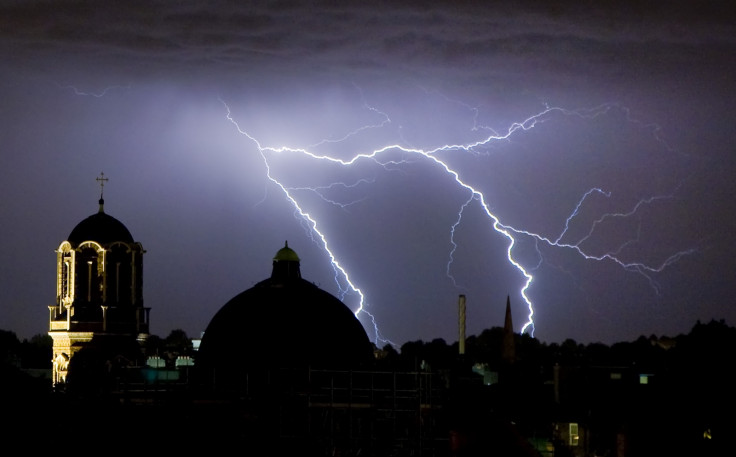Sun's Magnetic Field 'Pulling' Lightning Towards UK

The sun's magnetic field is "pulling" lightning towards the UK, increasing strikes by up to 50%, scientists have discovered.
University of Reading researchers say the Sun could be generating lightning strikes by temporarily "bending" the Earth's magnetic field with its own.
This results in a shower of galactic cosmic rays — tiny speeding particles from across the Universe — to enter Earth's upper atmosphere, producing more lightning strikes.
Published in the Institute of Physics journal Environment Research Letters, the scientists found that when the Earth's magnetic field was skewed by the sun, there were 50% more lightning strikes in the UK.
The Earth's magnetic field normally provides a built-in force field to shield from galactic cosmic rays. Previously, researchers had found that these cosmic rays prompt a chain reaction that leads to thunderclouds and lightning.
Lead author Matt Owens said: "We've discovered that the Sun's powerful magnetic field is having a big influence on UK lightning rates. The Sun's magnetic field is like a bar magnet, so as the Sun rotates its magnetic field alternately points toward and away from the Earth, pulling the Earth's own magnetic field one way and then another."
The team used satellite and Met Office data to show there was an increase in thunderstorms between 2001 and 2006, when the Sun's magnetic field – the heliospheric magnetic field – was pointing towards the Sun and away from Earth.
Researchers say the change of direction can bend Earth's own magnetic field, exposing some regions of our upper atmosphere to more galactic cosmic rays. They believe their findings could provide a reliable forecast system to give warnings of hazardous events weeks in advance.
Owens said: "From our results, we propose that galactic cosmic rays are channelled to different locations around the globe, which can trigger lightning in already charged-up thunderclouds. The changes to our magnetic field could also make thunderstorms more likely by acting like an extra battery in the atmospheric electric circuit, helping to further 'charge up' clouds.
"Scientists have been reliably predicting the solar magnetic field polarity since the 1970s by watching the surface of the Sun. We just never knew it had any implications on the weather on Earth. We now plan to combine regular weather forecasts, which predict when and where thunderclouds will form, with solar magnetic field predictions. This means a reliable lightning forecast could now be a genuine possibility."
Earlier this month, US researchers found climate change will increase lightning strikes across the US by 50% before the end of the century.
David Romps and colleagues from the University of California, Berkeley, looked at precipitation predictions and cloud buoyancy from different climate models to establish what impact warming temperatures will have on lightning strikes.
"With warming, thunderstorms become more explosive," Romps said. "This has to do with water vapour, which is the fuel for explosive deep convection in the atmosphere. Warming causes there to be more water vapour in the atmosphere, and if you have more fuel lying around, when you get ignition, it can go big time."
© Copyright IBTimes 2025. All rights reserved.






















